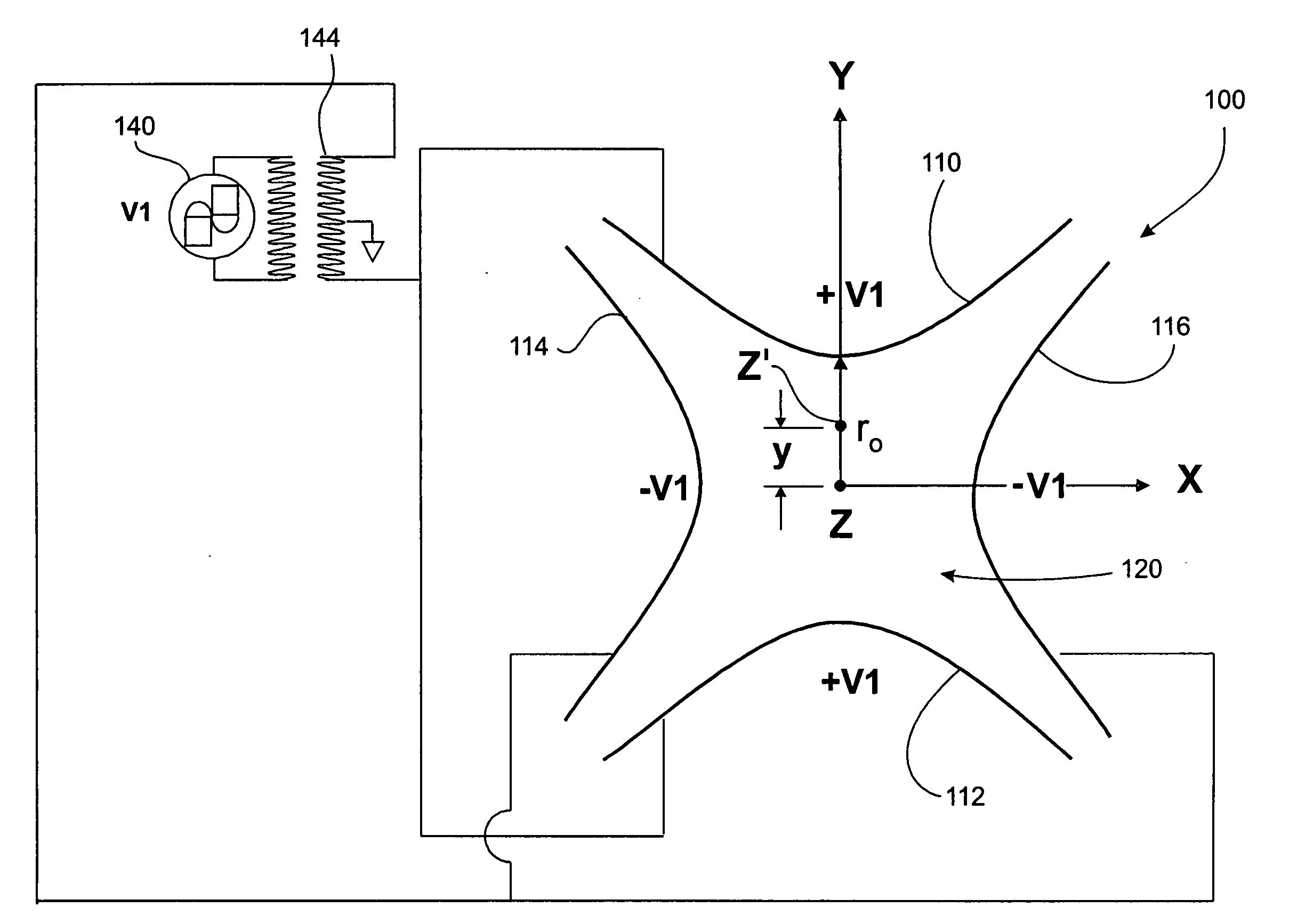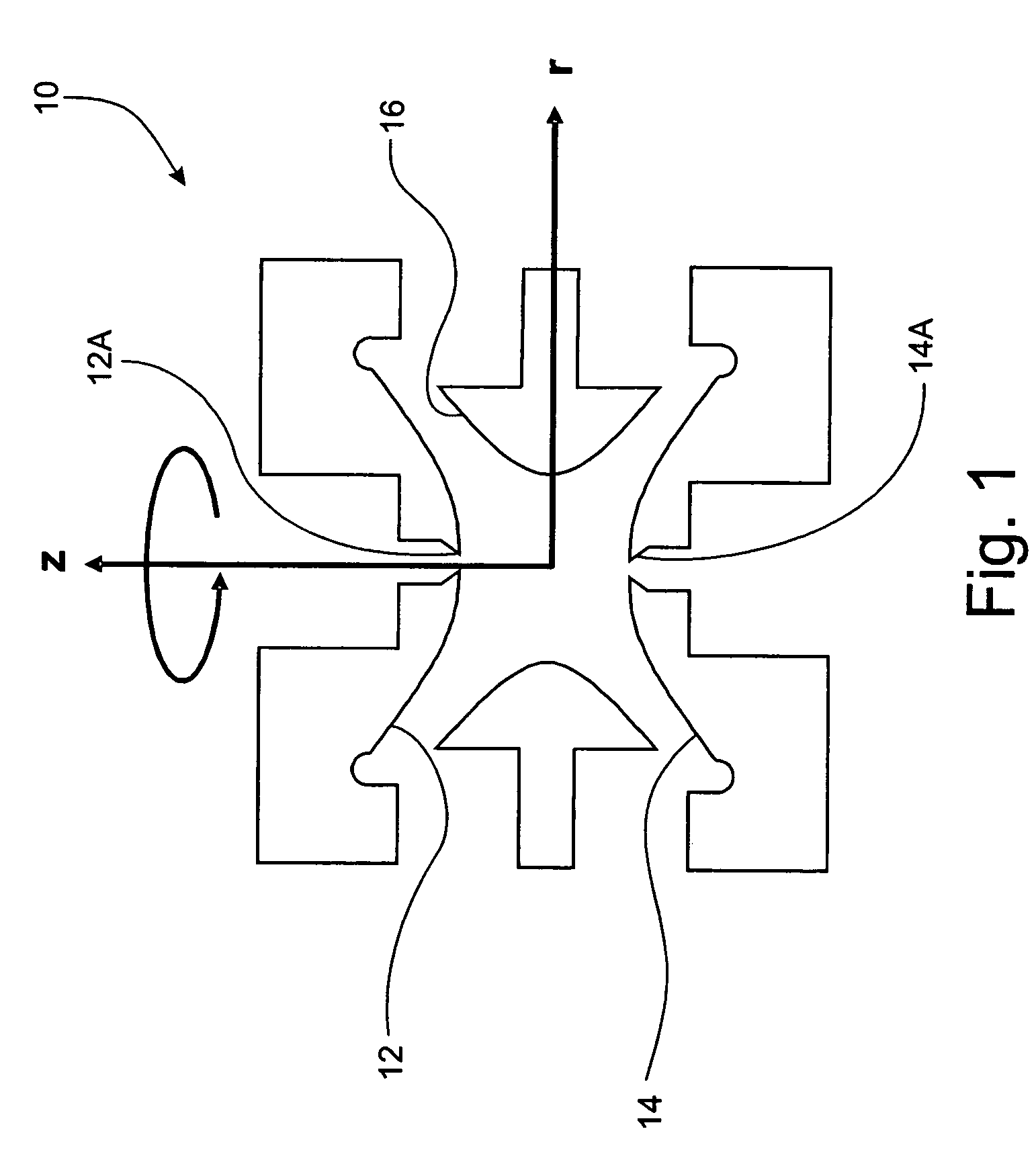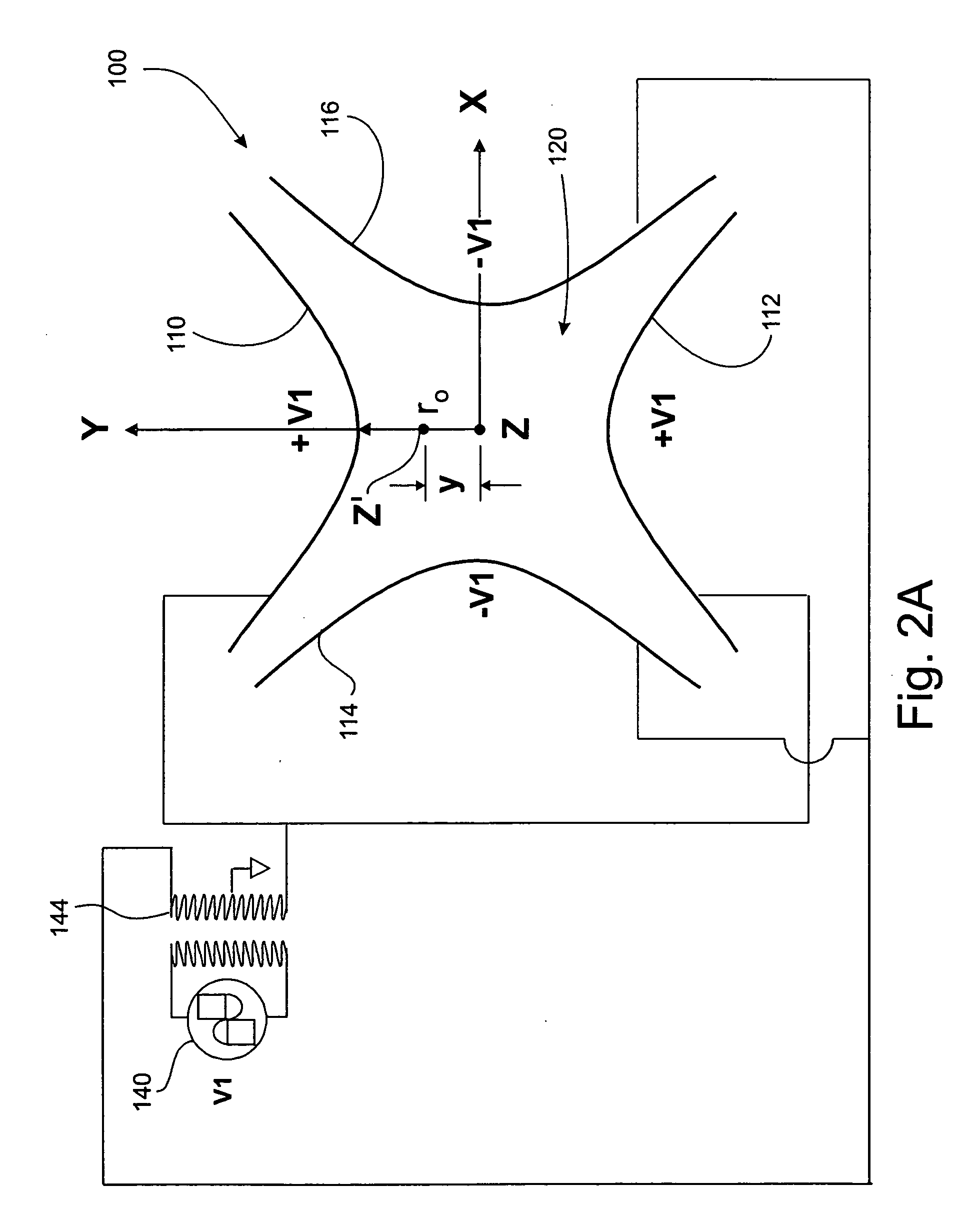Linear ion trap apparatus and method utilizing an asymmetrical trapping field
a technology of ion trapping and asymmetrical trapping field, which is applied in the direction of mass spectrometer, separation process, stability-of-path spectrometer, etc., can solve the problem of outside the stability region, unstable ions of increasing m/z values, and inability to adequately control or focus the direction of ion ejection
- Summary
- Abstract
- Description
- Claims
- Application Information
AI Technical Summary
Benefits of technology
Problems solved by technology
Method used
Image
Examples
Embodiment Construction
[0064] In general, the term “communicate” (e.g., a first component “communicates with” or “is in communication with” a second component) is used herein to indicate a structural, functional, mechanical, electrical, optical, or fluidic relationship between two or more components or elements. As such, the fact that one component is said to communicate with a second component is not intended to exclude the possibility that additional components may be present between, and / or operatively associated or engaged with, the first and second components.
[0065] The subject matter disclosed herein generally relates to a linear ion trap apparatus and method that can be utilized in a wide variety of applications for which control over ion motion is desired. The apparatus and method are particularly useful for implementing the selection or sorting of ions according to their respective m / z ratios. Thus, the apparatus and method are particularly useful in mass spectrometry although are not limited to...
PUM
 Login to View More
Login to View More Abstract
Description
Claims
Application Information
 Login to View More
Login to View More - R&D
- Intellectual Property
- Life Sciences
- Materials
- Tech Scout
- Unparalleled Data Quality
- Higher Quality Content
- 60% Fewer Hallucinations
Browse by: Latest US Patents, China's latest patents, Technical Efficacy Thesaurus, Application Domain, Technology Topic, Popular Technical Reports.
© 2025 PatSnap. All rights reserved.Legal|Privacy policy|Modern Slavery Act Transparency Statement|Sitemap|About US| Contact US: help@patsnap.com



